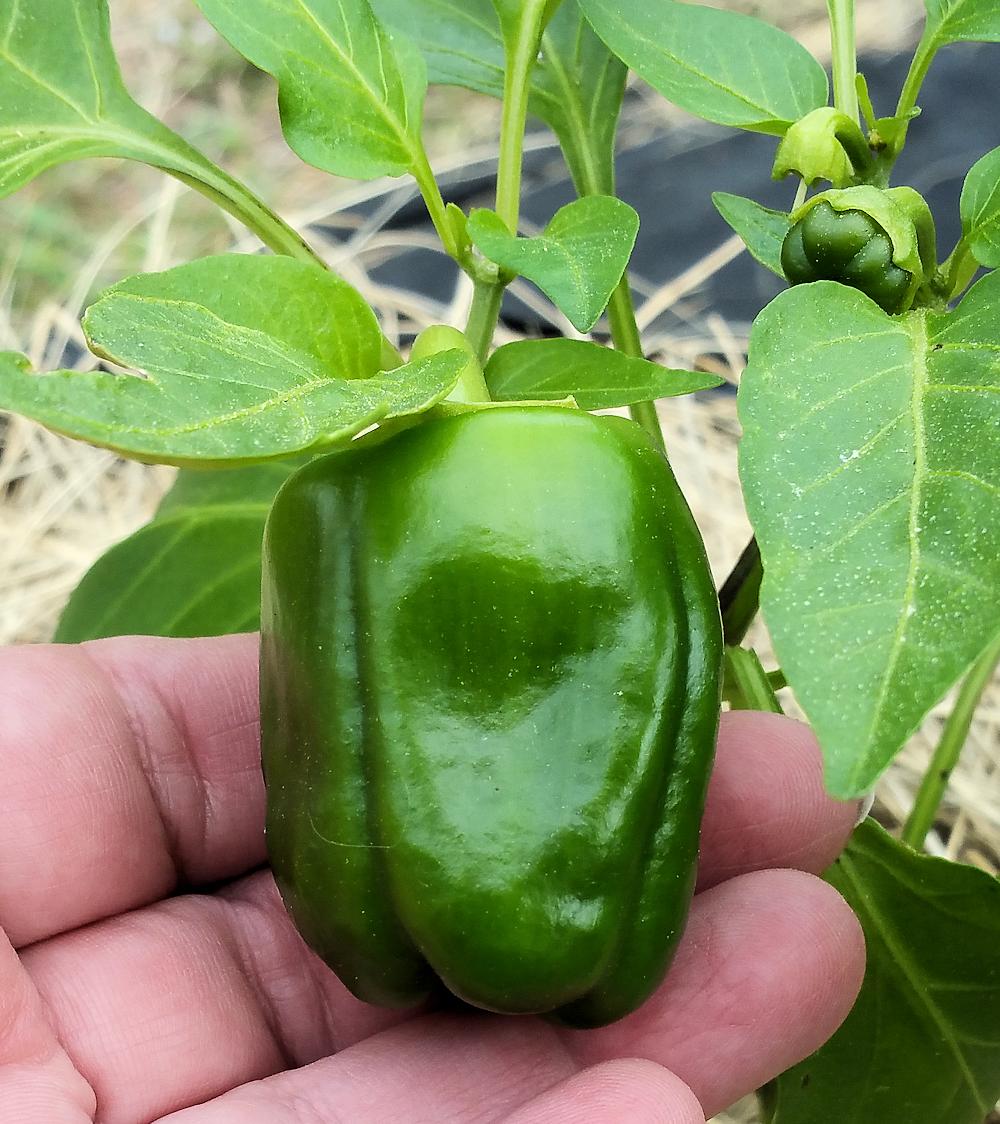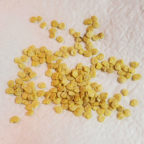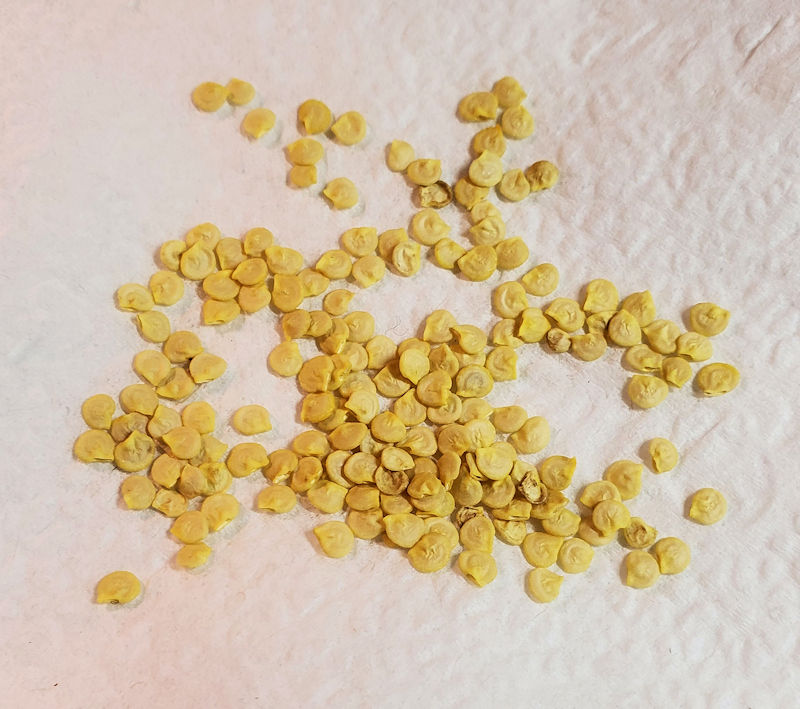Planting Grocery Store Bell Pepper Seeds
Planting grocery store bell peppers – can you do it? Sometimes you taste a bell pepper from the grocery store and it tastes so delicious, so why not save seeds? You can, with some caveats to consider — let’s talk about it.
Saving Grocery Store Bell Pepper Seeds
The very first thing to know if that you have to save the seeds from a ripe pepper — yellow, orange, red, etc. Green peppers are actually immature fruits, so don’t bother trying them (unless you are up for a challenge, LOL).
The next thing is to know that there is a very good chance that the pepper you bought is a hybrid. Hybrid peppers usually don’t breed true (unless the parents are very similar), so you may end up surprised with the fruits that grow. (Please don’t confuse the term “hybrid” with “GMO”; they are not the same thing.)
Finally, you may have a low germination rate, due to various circumstances, so plant more seeds than you think you will need. If they all sprout, great! It’s easier to get rid of the weaker plants, than it is to wait and wait and your seed doesn’t sprout.
Planting Grocery Store Bell Pepper Seeds
Now comes the fun part; saving those seeds and planting them! Here are the steps:
- Cut open your pepper and remove the seeds with your fingers. It’s easiest to do this over a paper plate or paper towl.
- Once the seeds are all out, let them dry out some on the paper plate or on a paper towel. If you’re in a dry climate, 1 day may be fine. In a more humid environment, plan on several days.
- Once the seeds are dry, take a look at them carefully. Discard any seeds which are dark, or which seem misshapen.
- Using your favorite seed starting medium, plant your pepper seeds.
- Water in the seeds well, but don’t leave them in a puddle of water.
- Remember to cover your container with a plastic dome, plastic wrap, sandwich bag or the like. Don’t make it airtight; you just want the container to keep some of the moisture in.
- If you have a seed germination mat, please use it; peppers really like to have bottom heat for germinating!
- Check your container every few days; if it seems dry, mist the seed starting medium with some warm water.
Peppers usually take between 5 days to 2 weeks to sprout, depending on the environment and the pepper itself. Don’t give up until it’s been 3+ weeks and no sign of germination. By planting extra seeds, you raise the chances of getting at least one to sprout!
(Note: If you are trying to germinate a habanero or other really hot pepper, they may take 4 weeks to germinate — don’t give up on them until 5+ weeks.)
You don’t need to put your seeds under a light for them to germinate, but once they do, move the seeds to a sunny windowsill or under a plant grow light. And once your weather gets warm enough (70+ degrees days, no lower than 55 degree nights) you can plant them outside. Here are some more tips on growing bell peppers.
Peppers grow well in containers (which is how I grow mine these days). I usually will plant 1 pepper in a 3-gallon container, or two plants in a 5-gallon container.  You can obviously also plant them in the ground.
Set the peppers in an area where they get at least 6 hours of direct sun a day.
Now because you have no idea as to what pepper variety your seeds came from, it’s hard to know how long it will take your seedling to go from planting out until you have some “green ripe” peppers, much less fully ripe (red, orange, yellow, etc.). And again, likely the pepper you saved seeds from was a hybrid, so you won’t know exactly what your pepper will end up like until it produces the fruit.
Have fun growing your grocery store pepper plants!
Sweet Bell Peppers – Growing
Sweet bell peppers growing isn’t all that hard, but you do need to know a few things to raise your chance for success! Here are some things you need to know about growing your own sweet bell peppers.
Pepper Needs
All sweet bell peppers have the same basic needs, which include:
- Sunlight – at least 6 hours per day; 8 hours is even better. But be careful about too much sunlight in some instances!
- Warmth – peppers love warm to hot weather, but it doesn’t mean you can’t grow them in cooler climates. Check out the bell peppers to consider.
- Water – most peppers like moist, well-drained soil.
Let’s talk more about the above three items for your homegrown sweet bell peppers.
Sunlight and Sweet Bell Peppers
When choosing where you grow your sweet bell peppers, the first thing to consider is sunlight. There isn’t much way around sweet bell peppers needing at least six hours of direct sunlight per day, but you also need to consider that you can actually have too much sunlight in some situations.
If you live in a place where your sunlight is extreme, you may have to actually provide a bit of shade when growing bell peppers. For example, growing sweet peppers in the southern part of the United States, or in the desert Southwest, you’ve got the double whammy of intense sunlight + intense heat. You may want to situate your pepper garden in a location where the peppers will get some light shade in the hottest part of the day.
If you live at a high altitude, you will also need to consider intense sunlight and the effect on the peppers. But if you don’t also have the intense heat, you may only need to be concerned with shading the sweet bell peppers themselves, so that they don’t get sunscald. Part of that can be accomplished by making sure the bell pepper variety you are growing has a good foliage cover.
Growing Bell Peppers and Warmth
With growing bell peppers, warmth is also a major consideration — they like it very warm. Which makes sense if you think about it, because peppers in general originated in Central and South America — quite warm regions!
They are happiest with temperatures in the 80s (Fahrenheit) during the days, and in the 60s at night. Most sweet bell peppers take 75 to 80 days from transplant to grow into sweet green peppers, ready to pick and eat. But if you want ripe bell peppers, that may take anywhere from another 2 weeks to a month before they turn their final color.
Bell peppers will quit growing at 55 degrees, so you need to consider the number of cool days you have in a growing season, as that may extend the time for ripe peppers. Solution? Grow a sweet bell pepper which needs a shorter time to harvest. Some varieties include:
- King of the North
- Northstar Hybrid
- Red Beauty Hybrid
What about frost? Frost will kill the bell peppers, so you need to be aware of your growing season – the date of your average latest expected frost to your average first expected frost. Unless you have some kind of frost protection, don’t think about transplanting them to the garden before the average last frost date for your area. And frost protection may not mean freeze protection!
Growing Sweet Peppers and Water
Sweet bell peppers need adequate water, but they definitely don’t like wet feet! Those growing sweet peppers need to be kept moist, and they like well-drained soil. (You can check out the post for what kind of soil peppers like for more info.)
You also need to consider how much sun your peppers get, along with how hot it is! If your peppers are in full sun all day and you live in a hot location, you may need to water every day in order to keep your sweet bell peppers from wilting (which can hurt the pepper development). A thick layer of mulch will help in these situations, along with making sure you have a good soil that retains enough water without making the roots swim.
Hope this information helps you grow your own sweet bell peppers (or peppers in general). 🙂

